- Startseite
- Über uns
- Industrie
- Dienstleistungen
- Lesen
- Kontaktieren Sie uns
Samenbankmarkt: Aktuelle Analyse und Prognose (2024-2032)
Schwerpunkt auf Service (Spermienlagerung, Samenanalyse und Genetische Beratung); Spender (Bekannter Spender, Anonymer Spender und Andere Spender); Befruchtungstechnik (Spendersamen-Insemination und In-vitro-Fertilisation); und Region/Land
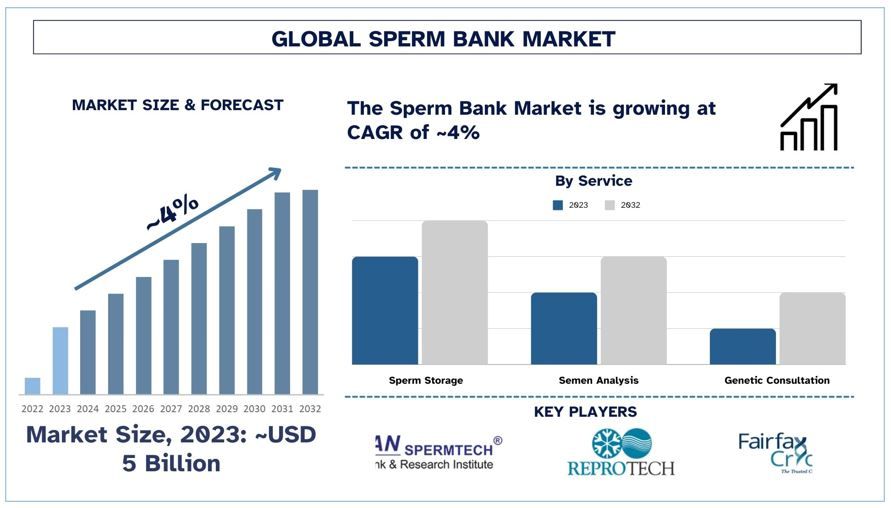 Globale Marktgröße für Samenbanken und Prognose
Globale Marktgröße für Samenbanken und Prognose
Der globale Markt für Samenbanken wurde im Jahr 2023 auf ~5 Milliarden USD geschätzt und wird voraussichtlich mit einer starken durchschnittlichen jährlichen Wachstumsrate (CAGR) von rund ~4 % im Prognosezeitraum (2024-2032) wachsen, was auf die steigende Präferenz für IVF aufgrund ihrer höheren Erfolgsraten im Vergleich zu anderen Methoden wie der Spendersamenübertragung zurückzuführen ist.
Globale Marktanalyse für Samenbanken
Der Markt für Samenbanken befindet sich weltweit in einer gesunden Wachstumsphase, was auf folgende Faktoren zurückzuführen ist: das Bewusstsein für die Erhaltung der Fruchtbarkeit, die Verbesserung der Reproduktionstechnologien und die gestiegene Nachfrage nach assistierten Reproduktionslösungen. Diese Trends waren frühe Elternschaft, gleichgeschlechtliche Paare, die sich Elternschaft wünschen, und alleinstehende Frauen, die eine Samenspende suchen. Auch Fortschritte bei Kryokonservierungstechniken und Gentests zur Diagnose genetischer Erkrankungen haben die Möglichkeiten der Spendersamenübertragung verbessert. Der Wettbewerb scheint sowohl von großen transnationalen als auch von zahlreichen regionalen Unternehmen geprägt zu sein, die ein breites Spektrum an Dienstleistungen anbieten, das von der Spenderwahl über das genetische Screening bis hin zur Lagerung von Proben reicht. Auch aus diesem Grund verspricht der globale Markt für Samenbanken eine kontinuierliche, fortschrittliche Entwicklung und Diversifizierung, da sich die gesellschaftlichen Fortschritte und die medizinischen Technologien weiter verändern.
Globale Markttrends für Samenbanken
In diesem Abschnitt werden die wichtigsten Markttrends erörtert, die die verschiedenen Segmente des globalen Marktes für Samenbanken beeinflussen, wie sie von unserem Team aus Forschungsexperten identifiziert wurden.
Bekanntes Spendersegment transformiert die Branche
Das Segment der bekannten Spender trägt am meisten zum Wachstum der Samenbanken bei, da es nicht nur sicher ist, sondern auch die gewünschten Eigenschaften bietet. Bekannte Spender sind wahrscheinlich Freunde oder Verwandte des Empfängers, was das Vertrauen stärken und die psychologische Wahrnehmung des Verfahrens durch das angehende Paar erleichtern kann. Dieses Segment befasst sich auch mit Fragen des genetischen Hintergrunds und der Identität der Spender, die für viele Menschen und Paare, die sich an assistierte Reproduktionstechnologien wenden, immer wichtiger werden. Daher führt eine erhöhte und zusätzliche Präferenz für bekannte Spenderdienste dazu, dass Samenbanken spezielle Programme und Hilfsmittel für bekannte Spenden auf dem Markt anbieten. Mit der kontinuierlichen Verbesserung des Bewusstseins und der Gesetzgebung über die bekannte Spendervereinbarung ist dieses Segment dazu bestimmt, eine Grundlage für das Wachstum des Samenbankensegments zu schaffen.
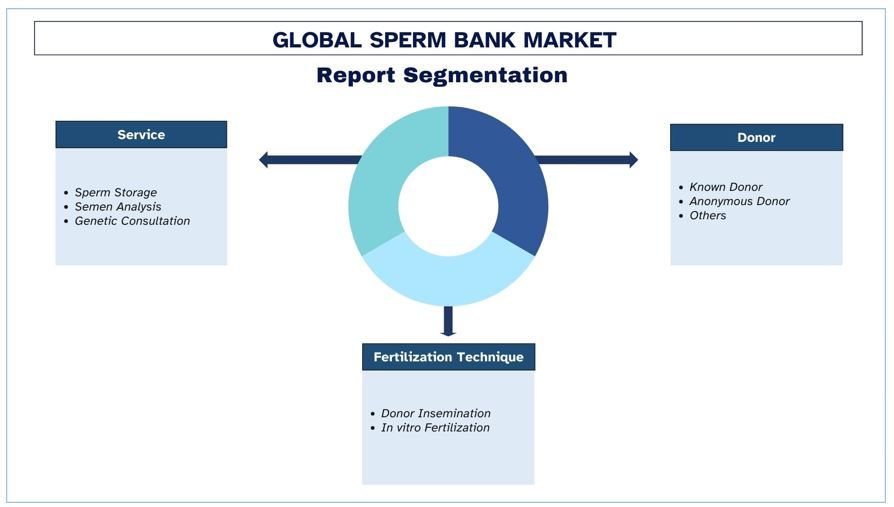
Es wird erwartet, dass der asiatisch-pazifische Raum im Prognosezeitraum die schnellste CAGR aufweisen wird.
Dieser Bericht zeigt, dass sich der asiatische Markt für Samenbanken aufgrund des wachsenden Wissens über die Erhaltung der Fruchtbarkeit und ARTs schnell entwickelt. China, Indien, Japan und Südkorea sind die beliebtesten asiatischen Länder, die aufgrund der zunehmenden Unfruchtbarkeit, der Verbesserungen der reproduktiven Gesundheit sowie der Akzeptanz von Samenspenden und künstlicher Befruchtung ein Wachstum anziehen. Der Markt befindet sich in der Entwicklung, da lokale und internationale Samenbankunternehmen in den Markt eintreten und der technologische Fortschritt bei der Samenkonservierung vorangetrieben wird. Auch die staatliche Unterstützung und das höhere Einkommen der mittleren Bevölkerungsgruppe, die zu einem Anstieg des Pro-Kopf-Verbrauchs führt, tragen dazu bei, den Markt auch in Zukunft auszubauen. Da sich die Wahrnehmung der Menschen in Bezug auf die reproduktive Gesundheit weiterentwickelt hat und die Fruchtbarkeitsdienste in der gesamten Region zugenommen haben, wird der asiatische Markt für Samenbanken in den kommenden Jahren ein erhebliches Wachstum erfahren.
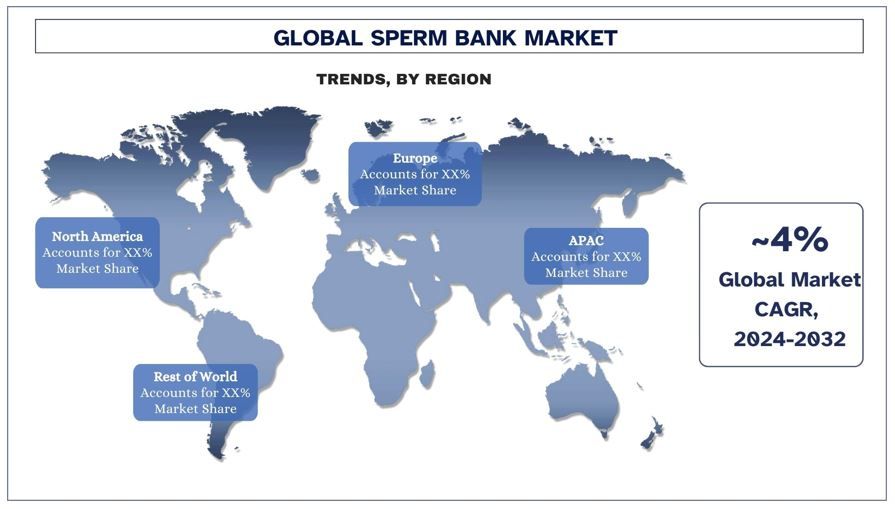
Globale Branchenübersicht für Samenbanken
Der globale Markt für Samenbanken ist wettbewerbsintensiv und umfasst mehrere globale und internationale Marktteilnehmer. Die wichtigsten Akteure verfolgen unterschiedliche Wachstumsstrategien, um ihre Marktpräsenz zu stärken, wie z. B. Partnerschaften, Vereinbarungen, Kooperationen, neue Produkteinführungen, geografische Expansionen sowie Fusionen und Übernahmen. Zu den wichtigsten Akteuren auf dem Markt gehören Cryos International, New England Cryogenic Center, European Sperm Bank, Fairfax Cryobank, Inc., The London Sperm Bank, Indian Spermtech, ReproTech LLC, Xytex Corporation, Cryobank America LLC und The Sperm Bank of California.
Abdeckung des globalen Marktberichts für Samenbanken
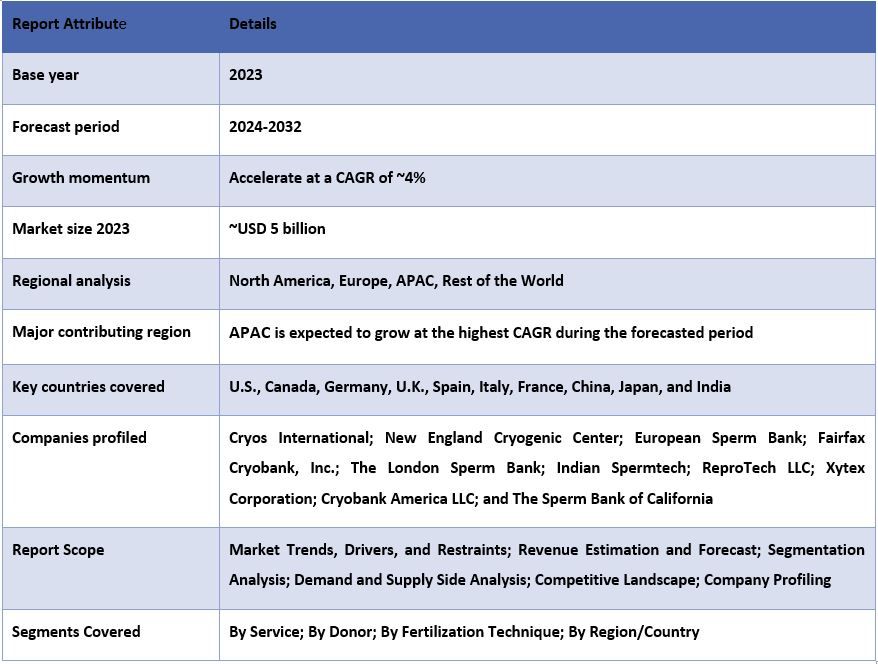
Gründe für den Kauf dieses Berichts:
- Die Studie umfasst eine Analyse der Marktgröße und -prognose, die von authentifizierten wichtigen Branchenexperten validiert wurde.
- Der Bericht bietet einen schnellen Überblick über die Gesamtleistung der Branche auf einen Blick.
- Der Bericht enthält eine eingehende Analyse der wichtigsten Branchenkollegen mit dem Schwerpunkt auf den wichtigsten Finanzkennzahlen, Typenportfolios, Expansionsstrategien und den jüngsten Entwicklungen.
- Detaillierte Untersuchung der Treiber, Einschränkungen, wichtigsten Trends und Chancen, die in der Branche vorherrschen.
- Die Studie deckt den Markt umfassend über verschiedene Segmente hinweg ab.
- Tiefgehende regionale Analyse der Branche.
Anpassungsoptionen:
Der globale Markt für Samenbanken kann je nach Bedarf oder einem anderen Marktsegment weiter angepasst werden. Darüber hinaus versteht UMI, dass Sie möglicherweise Ihre eigenen geschäftlichen Anforderungen haben. Zögern Sie daher nicht, uns zu kontaktieren, um einen Bericht zu erhalten, der Ihren Anforderungen vollständig entspricht.
Inhaltsverzeichnis
ForschungsMethodik für die Analyse des globalen Samenbankenmarktes (2024-2032)
Die Analyse des historischen Marktes, die Schätzung des aktuellen Marktes und die Prognose des zukünftigen Marktes des globalen Samenbankenmarktes waren die drei wichtigsten Schritte, die unternommen wurden, um die Akzeptanz globaler Samenbanken in den wichtigsten Regionen zu erstellen und zu analysieren. Umfassende Sekundärforschung wurde durchgeführt, um die historischen Marktzahlen zu erfassen und die aktuelle Marktgröße zu schätzen. Zweitens wurden zahlreiche Erkenntnisse und Annahmen berücksichtigt, um diese Erkenntnisse zu validieren. Darüber hinaus wurden ausführliche Primärinterviews mit Branchenexperten entlang der Wertschöpfungskette des globalen Samenbankenmarktes geführt. Für die Annahme und Validierung von Marktzahlen durch Primärinterviews haben wir einen Top-Down-/Bottom-Up-Ansatz zur Prognose der Gesamtmarktgröße angewendet. Danach wurden Methoden der Marktsegmentierung und Datentriangulation angewendet, um die Marktgröße von Segmenten und Untersegmenten der betreffenden Branche zu schätzen und zu analysieren. Eine detaillierte Methodik wird nachfolgend erläutert:
Analyse der historischen Marktgröße
Schritt 1: Eingehende Untersuchung sekundärer Quellen:
Eine detaillierte Sekundärstudie wurde durchgeführt, um die historische Marktgröße des globalen Samenbankenmarktes aus unternehmensinternen Quellen wie Jahresberichten und Finanzberichten, Performance-Präsentationen, Pressemitteilungen usw. sowie aus externen Quellen wie Zeitschriften, Nachrichten und Artikeln, Regierungsveröffentlichungen, Wettbewerberveröffentlichungen, Branchenberichten, Datenbanken Dritter und anderen glaubwürdigen Veröffentlichungen zu erhalten.
Schritt 2: Marktsegmentierung:
Nachdem wir die historische Marktgröße des globalen Samenbankenmarktes erhalten hatten, führten wir eine detaillierte Sekundäranalyse durch, um historische Markteinblicke und Anteile für verschiedene Segmente und Untersegmente in wichtigen Regionen zu sammeln. Die wichtigsten im Bericht enthaltenen Segmente sind Dienstleistungen, Spender, Befruchtungstechnik und Regionen. Darüber hinaus wurden Analysen auf Länderebene durchgeführt, um die allgemeine Akzeptanz von Testmodellen in dieser Region zu bewerten.
Schritt 3: Faktorenanalyse:
Nachdem wir die historische Marktgröße verschiedener Segmente und Untersegmente ermittelt hatten, führten wir eine detaillierte Faktorenanalyse durch, um die aktuelle Marktgröße des globalen Samenbankenmarktes zu schätzen. Darüber hinaus führten wir eine Faktorenanalyse unter Verwendung abhängiger und unabhängiger Variablen wie Dienstleistungen, Spender, Befruchtungstechnik und Regionen des globalen Samenbankenmarktes durch. Eine gründliche Analyse von Nachfrage- und Angebotsseitenszenarien wurde unter Berücksichtigung wichtiger Partnerschaften, Fusionen und Übernahmen, Geschäftsausweitungen und Produkteinführungen im globalen Samenbankenmarktsektor durchgeführt.
Schätzung und Prognose der aktuellen Marktgröße
Aktuelle Marktgrößenbestimmung: Basierend auf den umsetzbaren Erkenntnissen aus den oben genannten 3 Schritten haben wir die aktuelle Marktgröße, die wichtigsten Akteure auf dem globalen Samenbankenmarkt und die Marktanteile der Segmente ermittelt. Alle erforderlichen prozentualen Anteile und Marktaufschlüsselungen wurden unter Verwendung des oben genannten sekundären Ansatzes ermittelt und durch Primärinterviews verifiziert.
Schätzung und Prognose: Für die Marktschätzung und -prognose wurden verschiedenen Faktoren Gewichte zugewiesen, darunter Treiber und Trends, Einschränkungen und Chancen, die den Stakeholdern zur Verfügung stehen. Nach der Analyse dieser Faktoren wurden relevante Prognosetechniken, d. h. der Top-Down-/Bottom-Up-Ansatz, angewendet, um die Marktprognose für 2032 für verschiedene Segmente und Untersegmente in den wichtigsten Märkten weltweit zu erstellen. Die zur Schätzung der Marktgröße angewandte Forschungsmethodik umfasst:
- Die Marktgröße der Branche in Bezug auf den Umsatz (USD) und die Akzeptanzrate des globalen Samenbankenmarktes in den wichtigsten Märkten im Inland
- Alle prozentualen Anteile, Aufteilungen und Aufschlüsselungen von Marktsegmenten und Untersegmenten
- Wichtige Akteure auf dem globalen Samenbankenmarkt in Bezug auf die angebotenen Arten. Auch die Wachstumsstrategien, die diese Akteure anwenden, um im schnell wachsenden Markt zu konkurrieren
Validierung der Marktgröße und des Marktanteils
Primärforschung: Es wurden ausführliche Interviews mit den wichtigsten Meinungsführern (Key Opinion Leaders, KOLs) geführt, darunter Top-Führungskräfte (CXO/VPs, Vertriebsleiter, Marketingleiter, Betriebsleiter, Regionalleiter, Länderleiter usw.) in den wichtigsten Regionen. Die Ergebnisse der Primärforschung wurden dann zusammengefasst und eine statistische Analyse durchgeführt, um die aufgestellte Hypothese zu beweisen. Die Beiträge aus der Primärforschung wurden mit den Ergebnissen der Sekundärforschung zusammengeführt, wodurch Informationen in umsetzbare Erkenntnisse umgewandelt wurden.
Aufteilung der primären Teilnehmer in verschiedene Regionen
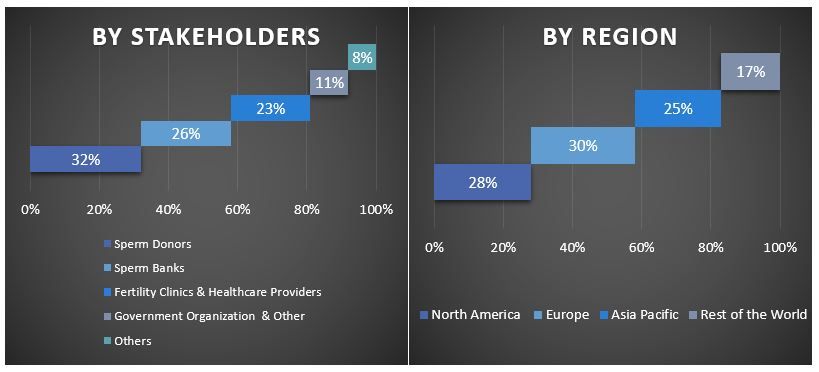
Markt-Engineering
Die Datentriangulationstechnik wurde angewendet, um die Gesamtmarktschätzung abzuschließen und präzise statistische Zahlen für jedes Segment und Untersegment des globalen Samenbankenmarktes zu erhalten. Die Daten wurden in mehrere Segmente und Untersegmente aufgeteilt, nachdem verschiedene Parameter und Trends in den Bereichen Dienstleistungen, Spender, Befruchtungstechnik und Regionen des globalen Samenbankenmarktes untersucht wurden.
Das Hauptziel der globalen Studie zum Samenbankenmarkt
Die aktuellen und zukünftigen Markttrends des globalen Samenbankenmarktes wurden in der Studie genau bestimmt. Investoren können strategische Einblicke gewinnen, um ihre Entscheidungen für Investitionen auf der Grundlage der in der Studie durchgeführten qualitativen und quantitativen Analyse zu treffen. Aktuelle und zukünftige Markttrends bestimmten die Gesamtattraktivität des Marktes auf regionaler Ebene und boten den Industrieteilnehmern eine Plattform, um den unerschlossenen Markt zu nutzen und von einem First-Mover-Vorteil zu profitieren. Weitere quantitative Ziele der Studien sind:
- Analyse der aktuellen und prognostizierten Marktgröße des globalen Samenbankenmarktes in Bezug auf den Wert (USD). Analysieren Sie auch die aktuelle und prognostizierte Marktgröße verschiedener Segmente und Untersegmente.
- Die Segmente in der Studie umfassen die Bereiche Dienstleistungen, Spender, Befruchtungstechnik und Regionen.
- Definieren und analysieren Sie den regulatorischen Rahmen für die Branche.
- Analysieren Sie die Wertschöpfungskette unter Einbeziehung verschiedener Vermittler und analysieren Sie das Kunden- und Wettbewerbsverhalten der Branche.
- Analysieren Sie die aktuelle und prognostizierte Marktgröße des globalen Samenbankenmarktes für die wichtigsten Regionen.
- Wichtige Länder der in dem Bericht untersuchten Regionen sind Asien-Pazifik, Europa, Nordamerika und der Rest der Welt
- Unternehmensprofile des globalen Samenbankenmarktes und die Wachstumsstrategien, die die Akteure anwenden, um sich in dem schnell wachsenden Markt zu behaupten.
- Tiefgehende regionale Analyse der Branche
Häufig gestellte Fragen FAQs
F1: Wie groß ist der aktuelle Markt und das Wachstumspotenzial des globalen Marktes für Samenbanken?
F2: Was sind die treibenden Faktoren für das Wachstum des globalen Samenbankenmarktes?
F3: Welches Segment hat den größten Anteil am globalen Samenbankmarkt nach Servicekategorie?
Q4: Was sind die aufkommenden Technologien und Trends auf dem globalen Samenbankmarkt?
F5: Welche Region wird den globalen Samenbankmarkt dominieren?
Verwandt Berichte
Kunden, die diesen Artikel gekauft haben, kauften auch










